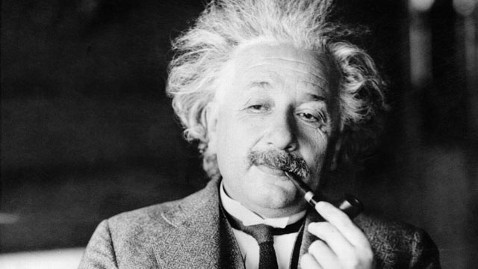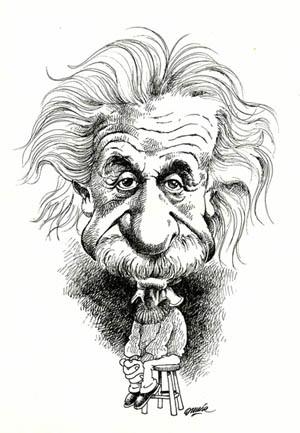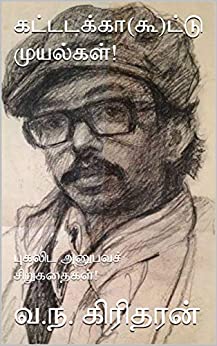Particles faster than light: Revolution or mistake?
By Brian Vastag

In science, revolutions take time. Eureka moments can stretch into noggin-scratching years. And so, the day after news broke of a possible revolution in physics — particles moving faster than light, violating Einstein’s ultimate speed limit — a scientist leading the European experiment that made the discovery calmly explained it to a standing-room-only crowd at CERN, the giant particle accelerator straddling the Swiss-French border. The physicist, Dario Auterio, made no sweeping claims. He did not try to explain what the results might mean for the laws of physics, let alone the broader world. After an hour of technical talk, he simply said, “Therefore we present to you today this discrepancy, this anomaly.” But what an anomaly it may be. From 2009 through 2011, the massive OPERA detector buried in a mountain in Gran Sasso, Italy, recorded particles called neutrinos generated at CERN arriving a smidge too soon, faster than light can move in a vacuum. If the finding is confirmed by further experiments, it would throw more than a century of physics into chaos.
Clocking the neutrinos’ speed requires knowing two things: the distance of the journey, and how long it took. Auterio detailed the extraordinary lengths his team took to make those two measurements. “We spent six months in various cross-checks,” he said of the team of 160 physicists from11 countries collaborating on the OPERA experiment, which is funded by the French and Italian governments.
Starting with GPS measurements, then upgrading the readings by sophisticated means, they measured the distance traveled — some 454 miles — to within eight inches. They factored in the rotation of the Earth, which moves ever so slightly in the flash it takes neutrinos to zoom to the detector. They even stopped traffic in a tunnel running through Gran Sasso mountain to calibrate their instruments.
An audience member asked whether the team accounted for the tugging of the moon on the Earth. “We took data continuously over three years, so this movement should average out,” Auterio said.
His explanations satisfied prominent spectators. “I want to congratulate you on a beautiful experiment,” said Samuel C.C. Ting, the Nobel Prize-winning particle physicist from the Massachusetts Institute of Technology, who was sitting in the second row of the auditorium. “The experiment is very carefully done, the systematic error very carefully checked.”
About 15,000 viewers tuned into a webcast of the seminar, a huge audience for a deeply technical talk.
“My impression is they did all the reasonable cross-checks,” said one of those viewers, theoretical physicist Matt Strassler of Rutgers University.
“They did a very serious job, it’s clear.”
Rob Plunkett, a scientist at Fermilab, the Department of Energy physics laboratory in Illinois, said, “There’s no question this is a result.”
Translation: The finding holds up to initial scrutiny.
Still, some yet-unknown error could invalidate the results. “This is one of those ‘devil in the details’ things,” Plunkett said.
“If you had to bet, you’d bet on some experimental error,” said Lisa Randall, the prominent Harvard University physicist and author of the new
book “Knocking on Heaven’s Door.” “There could be some error we don’t know about.”
Years of intense dissection — which OPERA and CERN scientists welcomed — will surely follow.
Fermilab operates a similar experiment, called MINOS, that shoots neutrinos from Illinois to an underground detector in Minnesota. In 2007,
MINOS sniffed a hint of faster-than-light neutrinos, but the margin of error was too big to “make a claim,” Plunkett said.
Fermilab scientists will now reanalyze their data, which will take six to eight months. In 2013, the MINOS detector, now offline, will restart after
an upgrade. It could then offer confirmation, or refutation, of the results.
If neutrinos do travel a smidge faster than light, it might mean a rewrite, rather than a scrapping, of Einstein’s theories, Strassler said. “It would
still be a big deal, but it might not be a ‘once in every three centuries’ thing.”
Still, physicists allowed that the finding could open the way to a new understanding of the universe. “There’s the chance that it’s a doorway
into something fundamental and deep we don’t know about nature,” Strassler said. “All the great revolutions in science start with an
unexpected
discrepancy that wouldn’t go away.”
Speed-of-light results under scrutiny at Cern
By Jason Palmer Science and technology reporter, BBC News

Enormous underground detectors are needed to catch neutrinos, that are so elusive as to be dubbed "ghost particles"
A meeting at Cern, the world's largest physics lab, has addressed results that suggest subatomic particles have gone faster than the speed of light.
The team presented its work so other scientists can determine if the approach contains any mistakes.
If it does not, one of the pillars of modern science will come tumbling down.
Antonio Ereditato added "words of caution" to his Cern presentation because of the "potentially great impact on physics" of the result.
The speed of light is widely held to be the Universe's ultimate speed limit, and much of modern physics - as laid out in part by Albert Einstein in his theory of special relativity - depends on the idea that nothing can exceed it.
Thousands of experiments have been undertaken to measure it ever more precisely, and no result has ever spotted a particle breaking the limit.
"We tried to find all possible explanations for this," the report's author Antonio Ereditato of the Opera collaboration told BBC News on Thursday evening.
"We wanted to find a mistake - trivial mistakes, more complicated mistakes, or nasty effects - and we didn't.
"When you don't find anything, then you say 'well, now I'm forced to go out and ask the community to scrutinise this'."
Friday's meeting was designed to begin this process, with hopes that other scientists will find inconsistencies in the measurements and, hopefully, repeat the experiment elsewhere.
"Despite the large [statistical] significance of this measurement that you have seen and the stability of the analysis, since it has a potentially great impact on physics, this motivates the continuation of our studies in order to find still-unknown systematic effects," Dr Ereditato told the meeting.
"We look forward to independent measurement from other experiments."
Neutrinos come in a number of types, and have recently been seen to switch spontaneously from one type to another.
The Cern team prepares a beam of just one type, muon neutrinos, and sends them through the Earth to an underground laboratory at Gran Sasso in Italy to see how many show up as a different type, tau neutrinos.
In the course of doing the experiments, the researchers noticed that the particles showed up 60 billionths of a second earlier than they would have done if they had travelled at the speed of light.
This is a tiny fractional change - just 20 parts in a million - but one that occurs consistently.
The team measured the travel times of neutrino bunches some 16,000 times, and have reached a level of statistical significance that in scientific circles would count as a formal discovery.
But the group understands that what are known as "systematic errors" could easily make an erroneous result look like a breaking of the ultimate speed limit.
That has motivated them to publish their measurements.
"My dream would be that another, independent experiment finds the same thing - then I would be relieved," Dr Ereditato told BBC News. But for now, he explained, "we are not claiming things, we want just to be helped by the community in understanding our crazy result - because it is crazy".
Courtesy: http://www.bbc.co.uk/news/science-environment-15017484
Light speed: Flying into fantasy By Jason Palmer Science and technology reporter, BBC News
 What if particles really can exceed the speed of light?
What if particles really can exceed the speed of light?
It is a fascinating and provocative question.
But first, it should be said that Thursday's news that physicists have seen subatomic particles called neutrinos exceed the Universe's speed limit is a picture of science still at work.
The researchers at Cern in Switzerland and Gran Sasso in Italy have tried really hard to find what they might be doing wrong - over three years and thousands of experiments - because they can hardly believe what they are seeing.
The publication of their results is a call for help to pick holes in their methods, and save physics as we now know it.
"The scientists are right to be extremely cautious about interpreting these findings," said Jim Al-Khalili, a physicist from the University of Surrey, who suggested that a simple error in the measurement is probably the source of all the fuss. But he has gone further.
"So let me put my money where my mouth is: if the Cern experiment proves to be correct and neutrinos have broken the speed of light, I will eat my boxer shorts on live TV."
Let us be clear: it would be a tremendously exciting time for physics, and a daunting one for physicists, but it is not going to change the price of milk.
Perhaps the most exciting thing is that time travel would look more feasible.
The speed of light is the cornerstone in Einstein's theory of special relativity, which is what gives us the concept of causality: causes precede effects, wherever you are. Remove that requirement, and time becomes a much more fluid thing than the one-way arrow we think it to be.
Don't go buying one just yet If an effect can precede a cause, showers of neutrons might arrive here on Earth before a supernova actuallykicks off on the other side of the galaxy.
OK, here's what we really want: Back to the Future-style popping around in time might be within our reach.
It gets weirder. Einstein may not have been wrong if we concede that there are extra dimensions of space that particles can nip into and out of, and some theories have already been around a while that suggest it.
"They're not mainstream theories, but they're fine," Brian Cox, a physicist who has worked at Cern, told the BBC.
"Let's say you go from London to Sydney - you fly around the Earth," Prof Cox explained. "The other way to do it is to go through digging a big tunnel straight through the Earth, and that's the shortcut.
"In some ways extra dimensions can behave like that and ... the neutrinos could be taking a shortcut through another dimension."
That leads neatly on to the "wormholes" popularised in science fiction, connecting one place in space to another vastly distant one.
Quantum questions
The list goes on - and there is a host of other implications, most of which arise because the speed of light figures in so many equations inscience. Neutrinos are already unusual - they are often called "ghost particles" It holds all of quantum mechanics together, for example, and that has given us the modern era of electronics, the internet, and the gizmo on which you are reading this.
Get an information-carrying particle going faster than light, and you change computing altogether. How about solving tomorrow's problems today?
This, again, is all speculation. But even Cern's director of research Sergio Bertolucci briefly got into the game.
"We all like the idea of travel in time, but it would be very difficult," he told the BBC.
"You can imagine: we'll never get old - politicians would stay young forever."
But Antonio Ereditato, part of the Opera collaboration that found the curious result, is holding fire on what it all might mean if true.
"I would prefer not to elaborate on that," he said.
"I'm sure that there are many, many colleagues in our community who will start to elaborate, but our task for the moment is one step behind: to make sure - absolutely sure - that this is a real effect and as solid as we think. "But this must be confirmed by other colleagues. This is the way our work is done."
Courtesy: http://www.bbc.co.uk/news/science-environment-15034414
Neutrino Faster Than Light … Maybe. Revising Relativity?
Did Einstein get something wrong?
 His theory of relativity — which has proved remarkably durable since he first proposed it in 1905 — said that the speed of light (186,000 miles per second) had to be something of a cosmic speed limit. But now a team of scientists at CERN, the giant particle accelerator physicists use in the Alps on the French-Swiss border, say they have conducted an experiment in which neutrinos — subatomic particles with no electric charge — traveled slightly faster than photons, the particles that make up light beams. If they’re right, it’s a big deal in the physics world — but that’s a big if.
His theory of relativity — which has proved remarkably durable since he first proposed it in 1905 — said that the speed of light (186,000 miles per second) had to be something of a cosmic speed limit. But now a team of scientists at CERN, the giant particle accelerator physicists use in the Alps on the French-Swiss border, say they have conducted an experiment in which neutrinos — subatomic particles with no electric charge — traveled slightly faster than photons, the particles that make up light beams. If they’re right, it’s a big deal in the physics world — but that’s a big if.
“The feeling that most people have is this can’t be right, this can’t be real,” said James Gillies, a spokesman for CERN. Physicists will now be poring over the report of the experiment, many of them saying they’re fascinated by the findings, but also inclined to be skeptical. (If you’re into such things, the abstract of the experiment is HERE.)
“We’d be thrilled if it’s right because we love something that shakes the foundation of what we believe,” said Columbia University physicist Brian Greene. “That’s what we live for.”
Other accelerators, particularly Fermilab outside Chicago, will be pressed into service to see if they can be made to replicate — or refute — the European results.
The neutrino was only proposed in 1930 as a mathematical construct to explain the behavior of other subatomic particles. Scientists say vast numbers of them (probably traveling at the speed of light) harmlessly pass through matter — including your body — all the time. Vast detectors, usually giant containers of pure water deep in underground mines, were set up to try to detect neutrinos. They were finally spotted in 1956.
Not until the last decade was anyone even able to demonstrate that they have mass.
And now they’ve traveled faster than light? Scientists say it does not change our lives in any direct way — at least not yet — but they say it does stretch the mind. (The Associated Press contributed to this story.)
Courtesy: http://abcnews.go.com/blogs/technology/2011/09/neutrino-faster-than-light-maybe/
Faster than Light - is it possible?
 Speed of Light I
Speed of Light I
Artist: Benjamin ArnotEver since Einstein developed his Special Theory of Relativity, the speed of light has been seen as the ultimate limit of how fast we can hope to travel. This theory has been with us for over a century now, and it seems to hold wherever it is tested. So I'm not trying to overthrow special relativity, but I feel that it might not be the whole story. Below I list a number of things which suggest that the speed of light might not be such an absolute limit.
General Relativity
Special relativity is all very well, but to describe space-time fully you need the more advanced theory of general relativity, and that suggests that there may be ways to exceed the universal speed limit. For instance, it has been shown that Wormholes are a valid solution to the equations of GR, and if you have a wormhole then you can jump from one place to another in an instant. Also the 'Warp Drive' of Star Trek might be more than just fiction - examples have been devised within the mathematics of GR. It's true that the realisation of either wormholes or warp travel seem to require some sort of exotic matter, and we don't know whether such matter might be possible. But there's a lot we don't know about quantum gravity, and when we know more we might find that it allows this sort of matter.
Bell's inequalities
You're probably familiar with Bell's inequalities, which are seemingly violated in certain quantum mechanical experiments. This implies that on the one hand it is impossible to transmit information faster than light, but on the other, if you want to model what is going on then your model must include faster than light information transmission, just hidden from any possible detection. The standard response to this is 'Yes, well the universe is a pretty weird place'. Well that's all very well while you're reading the works of Douglas Adams, but shouldn't we be trying to interpret the universe in the simplest possible way? And that would suggest that there may well be a new physics which underlies that which we presently know, in which there is an absolute frame of reference, and in which faster than light travel is indeed possible.
Cosmological Event Horizon
You may have heard of galaxies travelling away from us faster than light in another context. Anything beyond the Hubble sphere can be said to have superluminal recession speed. However, these are still visible, with finite redshift, and my feeling is that this is due to the choice of coordinates used, rather than being an example of true FTL motion.
Recent results in cosmology show that not only is the universe expanding, but that this expansion is accelerating. This means that there will be what is known as a Cosmological Event Horizon. As our observations approach this horizon, so the objects we see will be more and more redshifted, until the redshift is infinite at the horizon itself. But there is matter beyond the horizon, which might be thought of as having greater than infinite redshift, and so to be travelling away from us faster than light. However, some of this matter was once within our Cosmological Event Horizon, and so the Dark Energy which is driving the acceleration must have somehow pushed it beyond the light barrier. If we could find out more about this Dark Energy, then maybe we could use it for FTL travel of our own.
The enigmatic Neutrino
It used to be thought that, like light, neutrinos had no rest mass, and so always travelled at the speed of light. However, recent experiments indicate that they do in fact have a small rest mass. Hence, although they move very fast, their speed will always be below that of light. Thus there is the possibility of overtaking a neutrino. Now neutrinos have spin, and the peculiar thing is that the spin is always in the same direction - every neutrino is left-handed. But if we went fast enough to overtake a neutrino then it would appear to be right-handed. But it's a fundamental tenet of relativity that nothing in physics depends on how fast you are travelling. The neutrino suggests that there really is a distinction between low and high speed travel, thus undermining relativity and its prohibition of faster than light travel.
Doubly Special Relativity
The units of measurement we use in everyday life such as the mile or the kilogram are fairly arbirary. Using what we know about physics, it is possible to devise much more fundamental units of measurement. These are known as the Planck units. The Planck length is 1.6 � 10-35 metres, and can be thought of as the smallest possible length. This, however, causes a conflict with special relativity, since if an object's length was equal to the Planck length in its rest frame, then relativity tells us that it would have a shorter length in other frames of reference, which is impossible. This might not seem so important, since we don't yet have a theory of quantum gravity, and one would expect such a theory, when devised, to have some way of resolving this problem. What Giovanni Amelino-Camelia did was to turn the problem around and examine what could be deduced starting from the assumption that this problem must disappear. Thus Doubly Special Relativity was born. I won't go into the details of this theory here, but I just want to note that it's another example of a problem with special relativity as it was originally devised.
Courtesy: http://www.chronon.org/articles/Faster_than_light.html
Faster than light neutrinos – Q&A
 Tentative new evidence suggests Einstein's rule that nothing can travel faster than the speed of light may be wrong. What are the implications for our understanding of the world?
Tentative new evidence suggests Einstein's rule that nothing can travel faster than the speed of light may be wrong. What are the implications for our understanding of the world?
- Alok Jha, science correspondent guardian.co.uk, Friday 23 September 2011
What has been discovered?
A fundamental subatomic particle, the neutrino, seems to be capable of travelling faster than the speed of light (that is, the speed of a photon through a vacuum).
Why do physicists believe nothing can go faster than light speed?
At the turn of the 20th century, Albert Einstein used earlier work by the physicist James Clerk Maxwell to show that the speed of light, c, is a fundamental constant and that it is also the maximum speed that anything can travel. In practice, the only things that do travel at this speed are photons (particles of light) moving through a vacuum.
Einstein encapsulated c in his special theory of relativity, which says that the laws of physics are the same regardless of who is observing or experiencing them. To accommodate the invariance of the speed of light, Einstein had to modify Newton's laws of motion so that time and space became stretchy concepts – as an object moves faster, its size contracts and the time it experiences slows down. Special relativity also leads to Einstein's most famous equation, E = mc2 (where E is energy and m is mass), which shows that energy and matter are equivalent.
Where on the scale of amazing/surprising is this finding?
If the Gran Sasso results are proved correct, scientists would have reason to believe that the current formulation of special relativity is wrong. This is troubling, since the theory has been tested countless times in experiments and has not been disproved. It is a cornerstone of our understanding of the universe.
The speed limit of light is also the basis of cause and effect: effects always follow causes. If that does not always hold, the basic laws ofphysics might have to be rewritten.
What exactly did the physicists do?
Scientists at the Opera (Oscillation Project with Emulsion-tRacking Apparatus) experiment in Gran Sasso, Italy, found that beams of neutrinos sent to its detectors from Cern, 730km away in Geneva, arrived earlier than they should have.
The trip would take a beam of light around 2.4 milliseconds to complete, but after running the experiment for three years and timing the arrival of 15,000 neutrinos, the scientists discovered that the particles arrived at Gran Sasso 60 billionths of a second earlier, with an error margin of plus or minus 10 billionths of a second.
Since the speed of light in a vaccum is 299,792,458 metres per second, the neutrinos were apparently travelling at 299,798,454 metres per second.
What are neutrinos?
Neutrinos are electrically neutral particles that have a tiny (but non-zero) mass. They interact very weakly with normal matter, making them almost impossible to detect. Tens of billions of neutrinos pass through your fingertip every second. They are created in certain types of radioactive decay, during collisions between atoms and cosmic rays and during nuclear reactions such as those that occur at the heart of the Sun.
Are there any theories that might explain the result?
If the result is proved correct – and that is still a big if – you have to go into some relatively uncharted areas of theoretical physics to start explaining it. One idea is that the neutrinos are able to access some new, hidden dimension of space, which means they can take shortcuts.
Joe Lykken of Fermilab told the New York Times: "Special relativity only holds in flat space, so if there is a warped fifth dimension, it ispossible that on other slices of it, the speed of light is different."
Alan Kostelecky, an expert in the possibility of faster-than-light processes at Indiana University, put forward an idea in 1985 predicting that neutrinos could travel faster than the speed of light by interacting with an unknown field that lurks in the vacuum. "With this kind of background, it is not necessarily the case that the limiting speed in nature is the speed of light," he told the Guardian. "It might actually be the speed of neutrinos and light goes more slowly."
Does this mean that time travel is possible?
Don't hold your breath, we won't be routinely jumping into the past in DeLoreans any time soon. If particles could travel faster than light,
special relativity suggests that travelling backwards through time is a possibility, but how anyone harnesses that ability to do anything useful is way beyond the reach of any technology or material we have today.
Physicists have postulated a hypothetical particle, known as a tachyon, that can travel faster than light and that can therefore move backwards in time. But they also think that tachyons, if they exist, would have no way of interacting with normal matter.
Courtesy: http://www.guardian.co.uk/science/2011/sep/23/faster-light-neutrinos
**********************
Particles Found to Travel Faster than Speed of Light
Neutrino results challenge a cornerstone of Albert Einstein's special theory of relativity, which itself forms the foundation of modern physics.
By Geoff Brumfiel and Nature magazine | September 22, 2011
 An Italian experiment has unveiled evidence that fundamental particles known as neutrinos can travel faster than light. Other researchers are cautious about the result, but if it stands further scrutiny, the finding would overturn the most fundamental rule of modern physics—that nothing travels faster than 299,792,458 meters per second.
An Italian experiment has unveiled evidence that fundamental particles known as neutrinos can travel faster than light. Other researchers are cautious about the result, but if it stands further scrutiny, the finding would overturn the most fundamental rule of modern physics—that nothing travels faster than 299,792,458 meters per second.
The experiment is called OPERA (Oscillation Project with Emulsion-tRacking Apparatus), and lies 1,400 meters underground in the Gran Sasso National Laboratory in Italy. It is designed to study a beam of neutrinos coming from CERN, Europe's premier high-energy physics laboratory located 730 kilometers away near Geneva, Switzerland. Neutrinos are fundamental particles that are electrically neutral, rarely interact with other matter, and have a vanishingly small mass. But they are all around us—the sun produces so many neutrinos as a by-product of nuclear reactions that many billions pass through your eye every second.
The 1,800-tonne OPERA detector is a complex array of electronics and photographic emulsion plates, but the new result is simple—the neutrinos are arriving 60 nanoseconds faster than the speed of light allows. "We are shocked," says Antonio Ereditato, a physicist at the University of Bern in Switzerland and OPERA's spokesman.
Breaking the law
The idea that nothing can travel faster than light in a vacuum is the cornerstone of Albert Einstein's special theory of relativity, which itself forms the foundation of modern physics. If neutrinos are traveling faster than light speed, then one of the most fundamental assumptions of science—that the rules of physics are the same for all observers—would be invalidated. "If it's true, then it's truly extraordinary," says John Ellis, a theoretical physicist at CERN.
Ereditato says that he is confident enough in the new result to make it public. The researchers claim to have measured the 730-kilometer trip between CERN and its detector to within 20 centimeters. They can measure the time of the trip to within 10 nanoseconds, and they have seen the effect in more than 16,000 events measured over the past two years. Given all this, they believe the result has a significance of six- sigma—the physicists' way of saying it is certainly correct. The group will present their results September 23 at CERN, and a preprint of their results will be posted on the physics website ArXiv.org.
At least one other experiment has seen a similar effect before, albeit with a much lower confidence level. In 2007, the Main Injector Neutrino Oscillation Search (MINOS) experiment in Minnesota saw neutrinos from the particle-physics facility Fermilab in Illinois arriving slightly ahead of schedule. At the time, the MINOS team downplayed the result, in part because there was too much uncertainty in the detector's exact position to be sure of its significance, says Jenny Thomas, a spokeswoman for the experiment. Thomas says that MINOS was already planning more accurate follow-up experiments before the latest OPERA result. "I'm hoping that we could get that going and make a measurement in a year or two," she says.
Reasonable doubt
If MINOS were to confirm OPERA's find, the consequences would be enormous. "If you give up the speed of light, then the construction of special relativity falls down," says Antonino Zichichi, a theoretical physicist and emeritus professor at the University of Bologna, Italy. Zichichi speculates that the "superluminal" neutrinos detected by OPERA could be slipping through extra dimensions in space, as predicted by theories such as string theory.
Courtesy: http://www.scientificamerican.com/article.cfm?id=particles-found-to-travel




